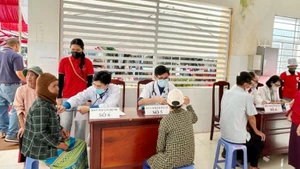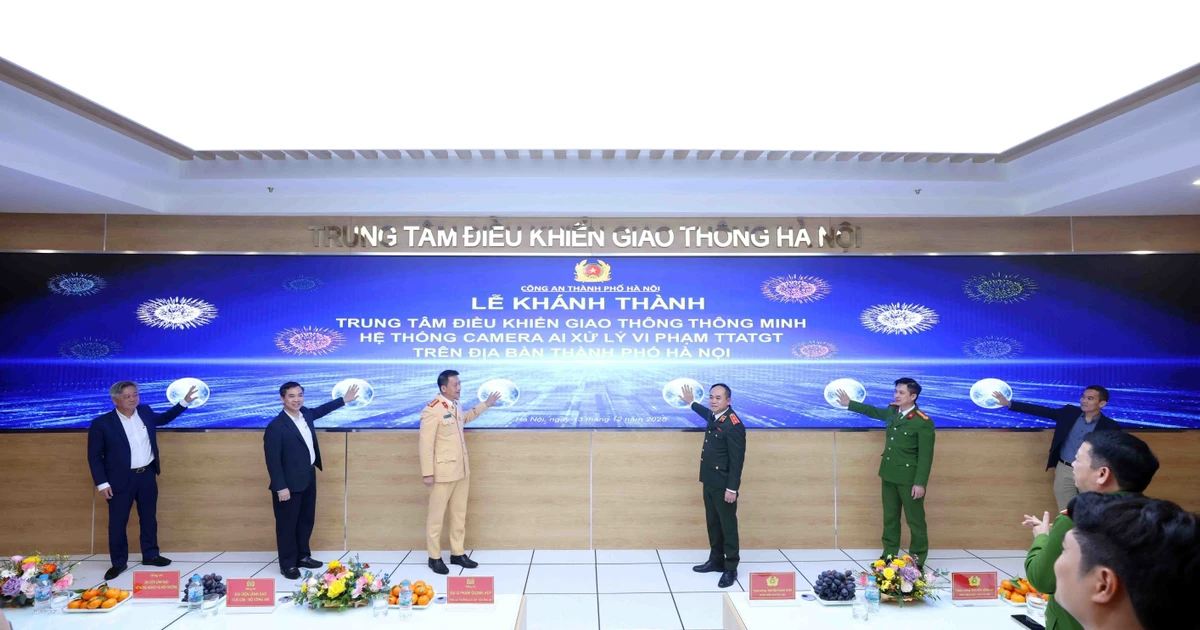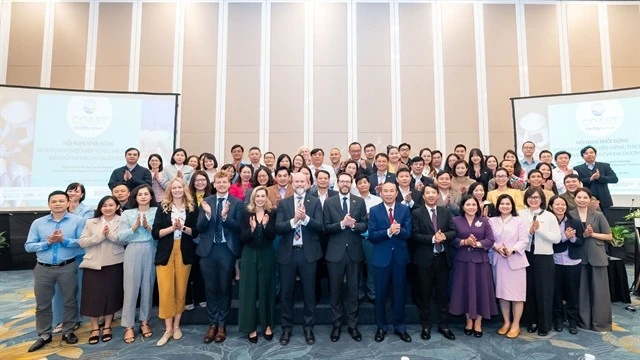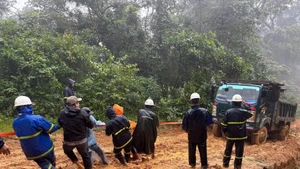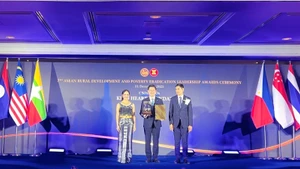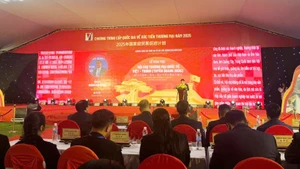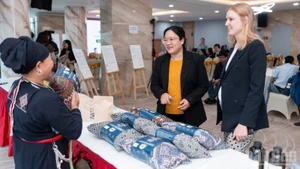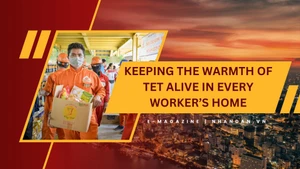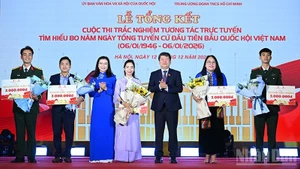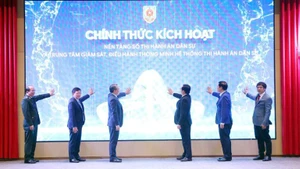In response to the complex developments of Typhoon No. 3, and in strict adherence to the directives of the Politburo, the Secretariat, the Government, the Prime Minister, the Central Military Commission, the Ministry of National Defence, and the orders of commanders, military units and local militia forces in the northern regions have swiftly implemented measures to prevent and mitigate the storm’s impact within their units and stationed areas. They have promptly communicated, mobilised, and assisted the public in evacuating as well as called and guided boats and residents to safety at storm shelters.
Before, during, and after Typhoon No.3, military units and local militia forces have stood shoulder to shoulder with local authorities and residents in responding to and mitigating the storm's consequences.
With the spirit of "human life as the top priority" and the motto "where there are difficulties and dangers, there are soldiers", along with the "four on-the-spot" principle, the units have maintained combat readiness while organising forces and equipment, promptly arriving at vulnerable and dangerous areas. They led the charge in storm and flood prevention, search and rescue, and assisting the people in overcoming the aftermath of Typhoon No.3.
Upholding their key role in disaster prevention, search and rescue, and relief efforts, right after Typhoon No.3, the Ministry of National Defence promptly directed Military Regions 1, 2, and 3, the Capital Command of Hanoi, the Navy, the Border Guard Command, Corps 12, the Coast Guard Command, and Corps 18 to mobilise more than 59,000 personnel (including soldiers and militia) along with 1,317 vehicles (including cars, boats, ships, and helicopters) to participate in the recovery efforts following Typhoon No.3.
Despite difficulties and dangers head-on, the personnel and soldiers of Military Region 3 arrived as quickly as possible to assist the local authorities and residents in addressing the aftermath of the typhoon. Adopting the principle of "saving lives first, property second", the units coordinated efforts to search for individuals stranded at sea or trapped in the mountains; salvage sunken boats and ships; clear fallen trees from roads; clean schools, health stations, and community areas; and help families with damaged roofs by reinforcing their living conditions. Their efforts played a significant role in helping people stabilise their lives after the storm.
Due to the residual effects of Typhoon No.3, heavy rain and flooding occurred in many areas within Military Region 2. Personnel and militia forces from the Military Region 2 promptly coordinated with local authorities and residents to address the consequences of the floods.
Notably, at 10:10 AM on September 9, the collapse of two spans of the Phong Chau Bridge (Phu Tho Province) caused several vehicles and people to fall into the river, where they were swept away by the current. Under the direction of the Ministry of National Defence, the Command of Military Region 2 quickly deployed hundreds of soldiers and militia, along with dozens of vehicles and boats, to assist with the recovery efforts and search for the missing people. Currently, Military Region 2 is working with the Engineering Corps and other forces to search for missing persons and salvage vehicles from the collapsed bridge as well as preparing to install a floating bridge at Phong Chau to ensure transportation and daily activities for residents with the utmost effort.
As part of the mission to prevent flooding in Ha Hoa District, Phu Tho Province, and following the orders of the Commanding Officer of Military Region 2, Regiment 98 of Division 316 (Military Region 2) rapidly deployed 300 personnel overnight to assist in search and rescue operations for residents swept away by flooding in Lang Nu Village, Phuc Khanh Commune, Bao Yen District, Lao Cai Province, during a devastating flash flood on the morning of September 10.
In recent days, while searching for individuals swept away by the floods in Lang Nu Village, personnel from Regiment 98, along with Border Guard soldiers, search dogs, and other forces, faced numerous dangers and hardships. These included a lack of drinking water, no electricity, makeshift living conditions, and working in deep mud while dealing with sharp objects such as nails, metal rods, corrugated iron, and broken pottery. Despite these challenges, the soldiers have maintained their dedication to serving the people, working diligently to search through bushes, grassy areas, muddy pits, and streams in hopes of finding the victims to hand over to their families for proper burial.
Among them was Private Thao Mi Linh, from Company 5, Battalion 8, an H'Mong ethnic minority from Lung Thau Commune, Dong Van District, Ha Giang Province. While performing his duties, he stepped on a deep nail, causing severe bleeding. The attending military doctor had to provide first aid, disinfect the wound, administer tetanus shots, and then transfer him to Military Hospital 109 for treatment.
Before parting from his comrades, Private Thao Mi Linh cried. His tears were not due to the pain but because he was unable to continue helping his team search for the villagers’ missing loved ones.
In recent days, while assisting the people in recovering from the aftermath of Typhoon No.3, the actions of military personnel have exemplified the courage, resolve, and selflessness of the People's Army, notably demonstrated by Captain Nguyen Dinh Khiem, Company Commander of Company 3, Battalion 1, Brigade 513, Military Region 3; and Lieutenant Colonel Tang Ba Hung, a professional driver in Squad 2 of Company 1 under Brigade 653 (Logistics Department of Military Region 3), who both made the ultimate sacrifice while performing their duties, leaving behind profound grief for their families and comrades and earning deep respect from the military and the public.
The aftermath of Typhoon No.3 has highlighted the complexity and unpredictability of extreme weather changes. Forecasts indicate that future weather patterns will remain highly complex and unpredictable, with continued threats to public safety and state property. The Central Military Commission and Ministry of National Defence will continue to lead and direct military units to further uphold the spirit, resolve, and revolutionary heroism of the Vietnamese People's Army. Emphasising "national solidarity and brotherhood", they will work together to assist the northern provinces and cities in promptly recovering from the storm's aftermath, quickly stabilising lives, and showcasing the admirable qualities of the Ho Chi Minh soldiers in the new era.

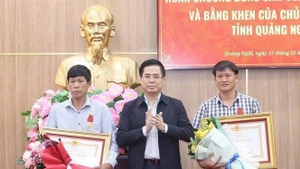
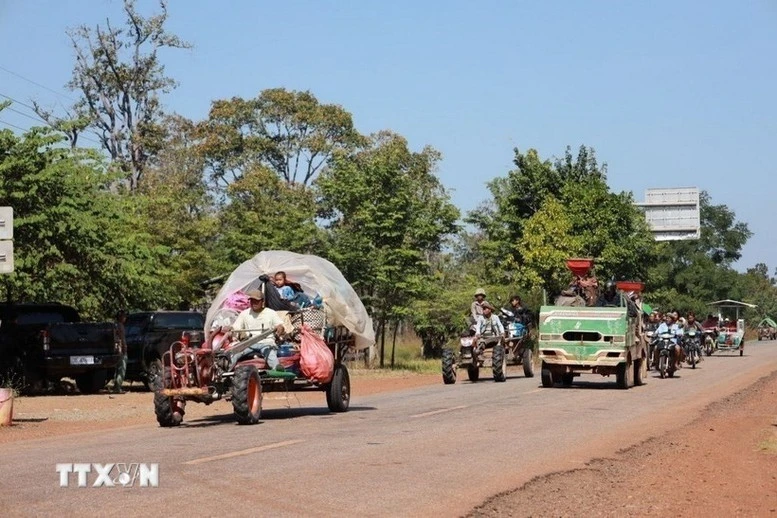
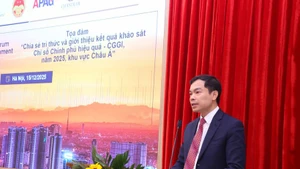
![[Video] Ha Noi: Specialised policies drive sustainable poverty reduction breakthroughs](https://en-cdn.nhandan.vn/images/8f440db7b9bfe62cb5397a6750a8b01bbaf06a77cd3ba844b6a06b6142d24086491b89243c34896c7911c3e80101275f91bf1e90a5f8d4ce13dc0f62a878f516/hanoi.jpg.webp)

